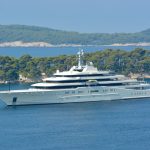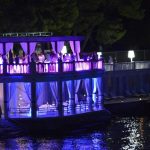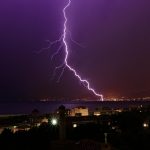This year marks the 1700th anniversary of the martyrdom of Saint Blaise, a feast which will be celebrated on February 3, 2016.
St Blaise (Croatian: Sveti Vlaho) is the City of Dubrovnik’s patron saint and arguably its most beloved historical figure. For over one thousand years, Dubrovnik has celebrated the feast day of Saint Blaise by staging one of the most impressive and iconic annual festivals in Europe, and indeed, the world: the Festivity of Saint Blaise (Croatian: Festa svetoga Vlaha). The celebrations encompass the whole city and surrounding region, bringing everyone together. It is an event held dear to the hearts of locals and is the subject of great interest from visitors and tourists.
This more than impressive festival commemorates Saint Blaise’s salvation of Dubrovnik on the eve of a surprise attack in the now very distant year of 971. According to tradition, Saint Blaise’s miraculous intervention successfully thwarted a planned invasion of the city, and as an expression of gratitude, the residents of Dubrovnik embraced the saint’s cult, proclaiming him their patron saint and their eternal protector.
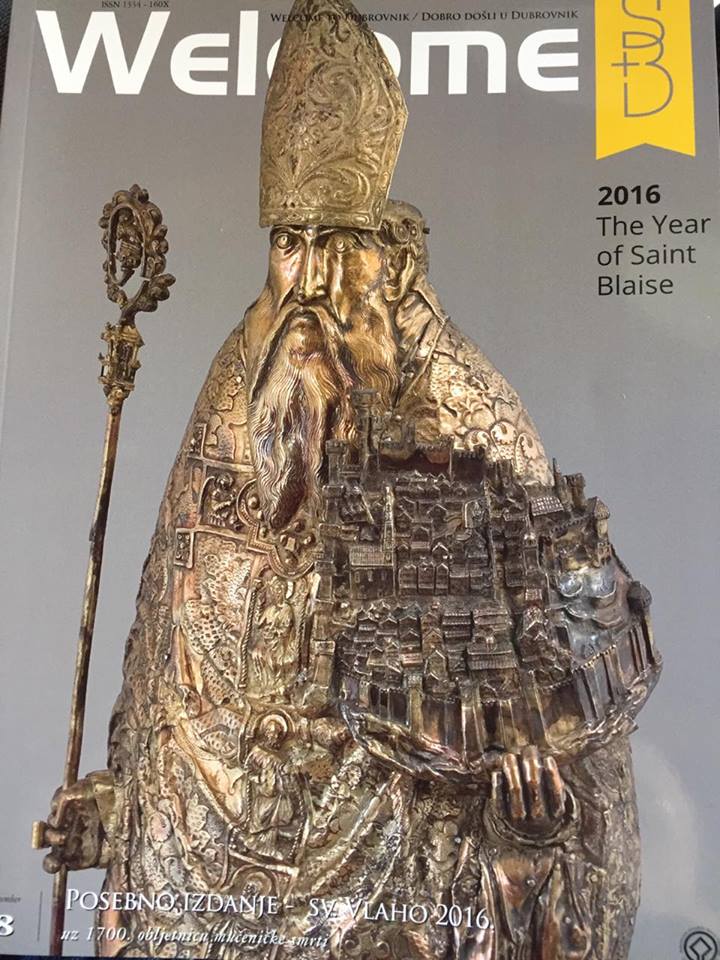
(St. Blaise features heavily in the new edition of the Dubrovnik magazine, launched yesterday)
To detail the events as we know them, it is said that the night of February 2, 971, began quietly and as usual in Dubrovnik. It was Candelmas, (the feast of the Presentation of Jesus). A large fleet of Venetian ships were anchored beyond the city walls, waiting before continuing east.
The city’s pastor at the time, a man named Stojko, was out for an evening stroll. As he approached the church of Saint Stephen that night, he noticed something strange, it is said that the doors to the church had been left wide open. Stojko cautiously entered the unlit church and discovered an old man who introduced himself as Saint Blaise, who then went on to gravely explain the reason for his presence, “I come to warn you of great danger for the city,” he said.
The Venetians who were anchored outside the city walls had arrived under false pretence, and they had planned to take the unsuspecting city by surprise. Dubrovnik was then a flourishing commercial power and a potential rival to Venice. Terrified by Saint Blaise’s words, Stojko ran to the city council and warned them of the ships and the impending attack. The gates to the city were quickly closed and secured, and the mighty walls of the town were manned for defence. Seeing these preparations and realising that their invasion plans had been thwarted, the Venetians abandoned their attack and departed, leaving Dubrovnik (then called Ragusa) in peace.
Over the many centuries, the relationship between Dubrovnik and their saint flourished, and the identities of both became so heavily intertwined that they were virtually inextricable, and because of this, the annual Festivity of Saint Blaise has been celebrated in some recorded form since at least 1190. Succeeding generations have respectfully adapted some parts of the festival to the times, which has kept it vibrant, relevant and deeply embedded in Dubrovnik’s culture even in the modern day world. Saint Blaise’s image can be found everywhere and anywhere in Dubrovnik, and his spirit and importance is very much alive today.
The celebration begins on February 2nd with the Virgin Mary Candlemas, the release of white doves in front of the Church of St Blaise and the raising of St Blaise’s flag on Orlando’s column (Orlando’s Column, also known as Roland’s Column, is a statue in the old town which commemorates the knight and hero of the famous medieval poem The Song of Roland (La Chanson de Roland), who died in the service of the emperor Charlemagne at the Battle of Roncevaux in 778.) The raising of the flag, which is a white standard embroidered with an image of Saint Blaise as a bishop – is accompanied by the ringing of the church bells, the discharging of historic firearms, and the release of white doves as previously mentioned, the release of white doves. Joyous shouts of “Long live Saint Blaise!” follow from the crowds. In the evening, Vespers to honour Saint Blaise are sung in the cathedral.
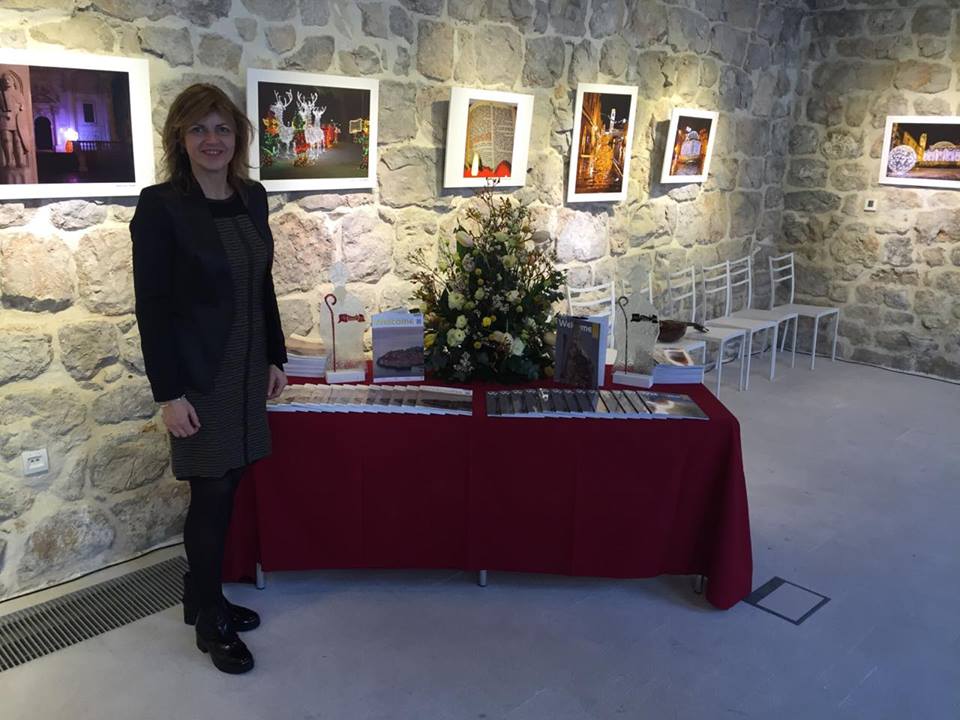
(The magazine launch yesterday with Dubrovnik Tourist Board director Romana Vlasic – a full TCN picture special from the feast of St. Blaise in this historic 1700 years, will follow)
On the feast day (February 3rd), festivities resume early in the morning, with the ringing of church bells, the clamor of brass bands, and more volleys from the city’s historic musketeers, called the Trombunjeri. At around mid-morning, a public mass is held outside Dubrovnik Cathedral (the Cathedral of the Assumption), at its conclusion, a grand procession of celebrants – including Trombunjeri, banner bearers, priests, nuns, musicians, First Communicants, pilgrims, residents in national costumes, and specially appointed Festanjuls (celebrators) – makes its way from the cathedral down the Stradun and through the heart of the old city. The procession is definitely one of the most vibrant, striking elements of the festival. One of the highlights of the parade includes the procession and display of Dubrovnik’s most prized relics, including the head, right hand, foot, and throat of Saint Blaise, they are housed in reliquaries of gold and silver, and have been described as the greatest cultural and artistic treasure of Dubrovnik Cathedral. When the long parade arrives at the church, the banners are swirled and lowered in an intricate display of historic, local technique. Priests spend this day blessing the believers who gather there using two intertwined candles around the throat which is believed to prevent throat problems and related diseases. As the light dims and the darkness of dusk begins to fall, the stained glass windows of St Blaise church blaze with light.
Naturally, as with every Croatian festival, there is also a considerably large lunch involved. The traditional dish is macaroni with meat sauce, followed by hrostule doughnuts.
The festival of the patron saint and protector of Dubrovnik, represents an exceptional example of intangible cultural heritage, which in a continuous historic sequence from the 10th century to our time, has kept all of its traditional features and expression, channelling local culture into diverse manifestations and spiritual dimensions. This unique celebration of eternal gratitude and worship of Saint Blaise has shaped the entire cultural face of the City of Dubrovnik as the world knows it today.
In 2009, St Blaise Feast Day in Dubrovnik was inscribed on UNESCO’s List of Intangible Heritage, and rightly so.
(sources: https://reliquarian.com/)




